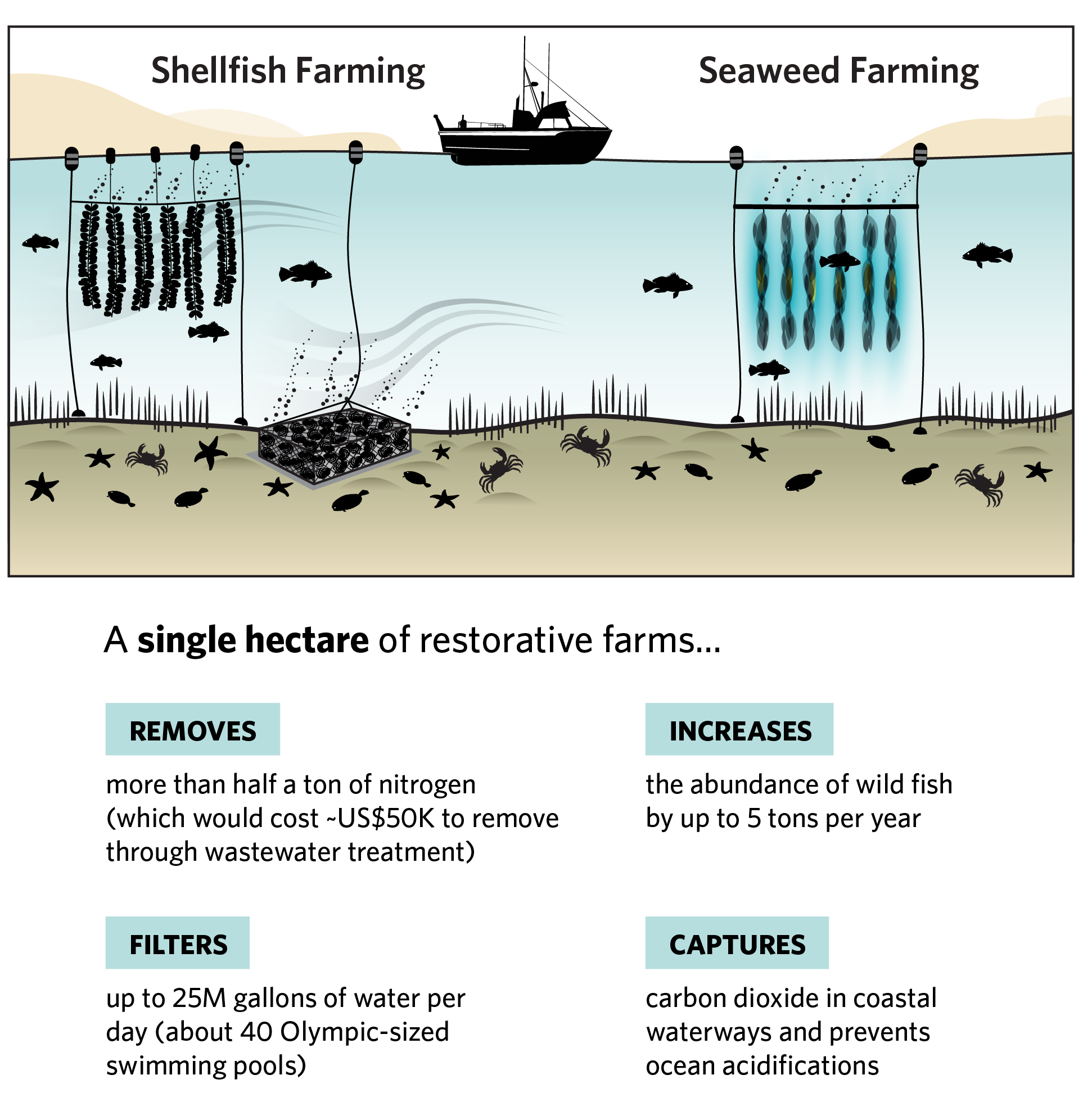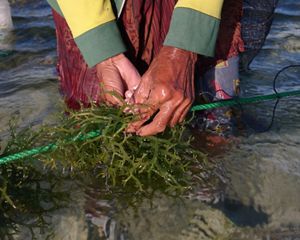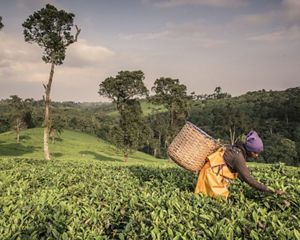Restorative Aquaculture for Nature and Communities
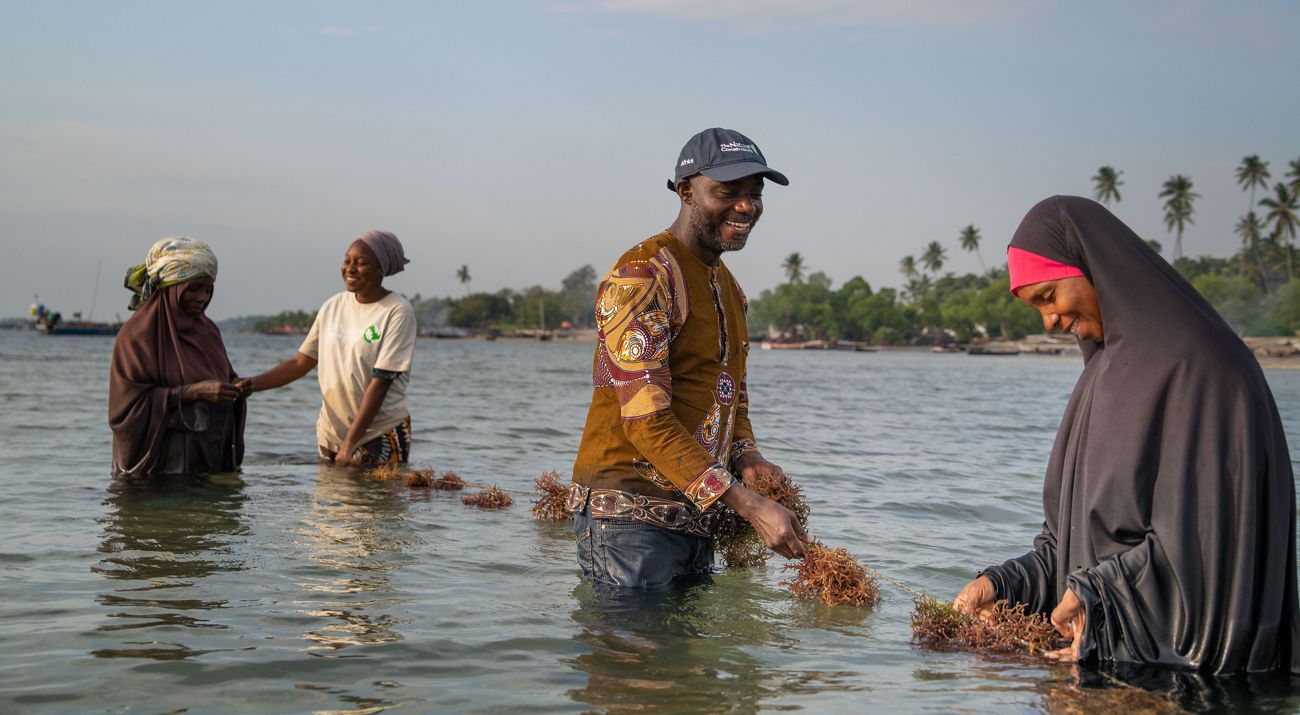
Key Takeaways
- There is a pressing need to provide food for people within planetary limits—including new approaches that actively restore ecosystem health.
- A growing body of research conducted by TNC scientists and partners demonstrates that aquaculture can help restore ocean health, as well as support economic development and food production in coastal communities worldwide—if the right practices are deployed in the right places.
- Ecological and economic studies show these benefits can be significant, and spatial analysis has identified the regions around the world most suited for restorative aquaculture. Taken together, this body of information shows how and where to get the most benefit from restorative aquaculture.
- In a recent paper, TNC and its partners reaffirmed a set of six clear principles and implementation guidance, providing a path forward for industries, governments and communities to develop aquaculture in a way that actually benefits nature.
The Opportunity for Restorative Aquaculture
It’s a long-held assumption that food production and environmental health are a zero-sum game. After all, food production currently accounts for nearly one-quarter of global greenhouse gas emissions, and 70 and 80 percent of freshwater usage and habitat degradation respectively. The ocean, meanwhile, faces unprecedented perils in the form of overfishing, coastal water pollution, and habitat degradation, including food production through fishing and aquaculture.
There’s no doubt a nature-positive transition is swiftly needed across all our diverse food production systems. But a growing body of evidence is challenging the assumption that increasing food production will inevitably result in the degradation of nature. In fact, it’s possible to produce nutritious food and actively contribute to the recovery of ecosystems at the same time.
Aquaculture is not only the fastest-growing form of food production—it can also be one of the most environmentally efficient ways of producing food. This is especially true for bivalves and seaweed, which are near-zero input forms of farming—their production requires almost no feed, freshwater or land and results in minimal greenhouse gas emissions.
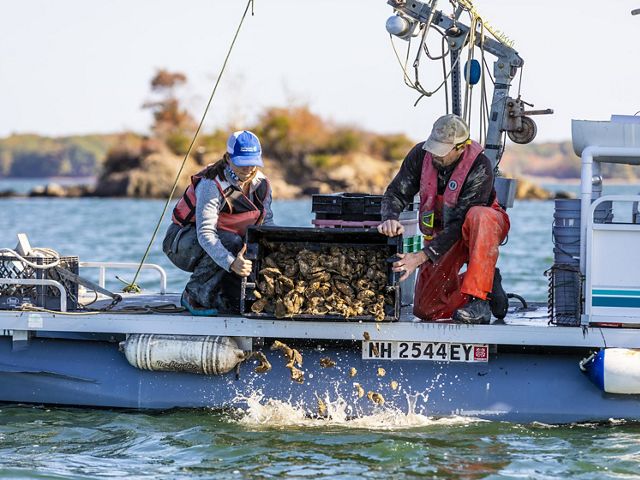
This may surprise some, as the industry has historically been associated with localized environmental damage. But a substantial number of peer-reviewed publications now show that shellfish and seaweed farms—with the right practices, in the right places—can actually help restore ocean health, while supporting economic development and food production in coastal communities worldwide, a collective set of gains annually worth billions of dollars to people and nature.
And as noted in our recent report Foodscapes: Toward Food System Transition, an expansion of restorative aquaculture and improved management of wild fisheries could sustainably increase how much food we get from the ocean by 36-74 percent by 2050, making aquaculture a key part of transitioning toward a food system that works with nature.
Guiding Principles
With greater attention on regenerative food systems and restorative aquaculture, there is the risk that increased demand could lead to confusion regarding these terms and their intent. An expert working group led by The Nature Conservancy (TNC) produced the Global Principles of Restorative Aquaculture in 2021, a report intended to define restorative aquaculture, provide implementation guidance, establish parameters, and forge a common understanding for this important ocean restoration and food production solution.
This guidance was reaffirmed and updated in a new paper in Conversation Science and Practice, alongside new examples of restorative practices and recommendations on how to foster a restorative approach through research and development, evolving operation and technical approaches, and improving governance, policy and regulation.
What is Restorative Aquaculture?
Restorative aquaculture occurs when commercial or subsistence aquaculture provides direct ecological benefits to the environment, with the potential to generate net-positive environmental outcomes.
A consistent definition and set of global principles—agreed upon by scientists from leading organizations around the world—will drive clarity and support necessary scaling. The definition and guidance in the report, importantly, apply to large and small-scale operations, include freshwater (inland) and marine (coastal and offshore) aquaculture and are not limited in geographic scope.
Principles of Restorative Aquaculture
Download Restorative Aquaculture Resources
-
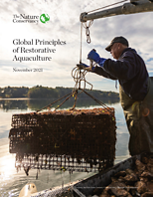 Global Principles of Restorative Aquaculture Report
Global Principles of Restorative Aquaculture ReportRead our 2021 report on how aquaculture can help restore ocean health, as well as support economic development and food production.
Download -
New Guidance for Restorative Aquaculture
Updated guidance with new examples of restorative practices and recommendations for industries, governments and communities.
Download
Drivers and Enablers of Restorative Aquaculture
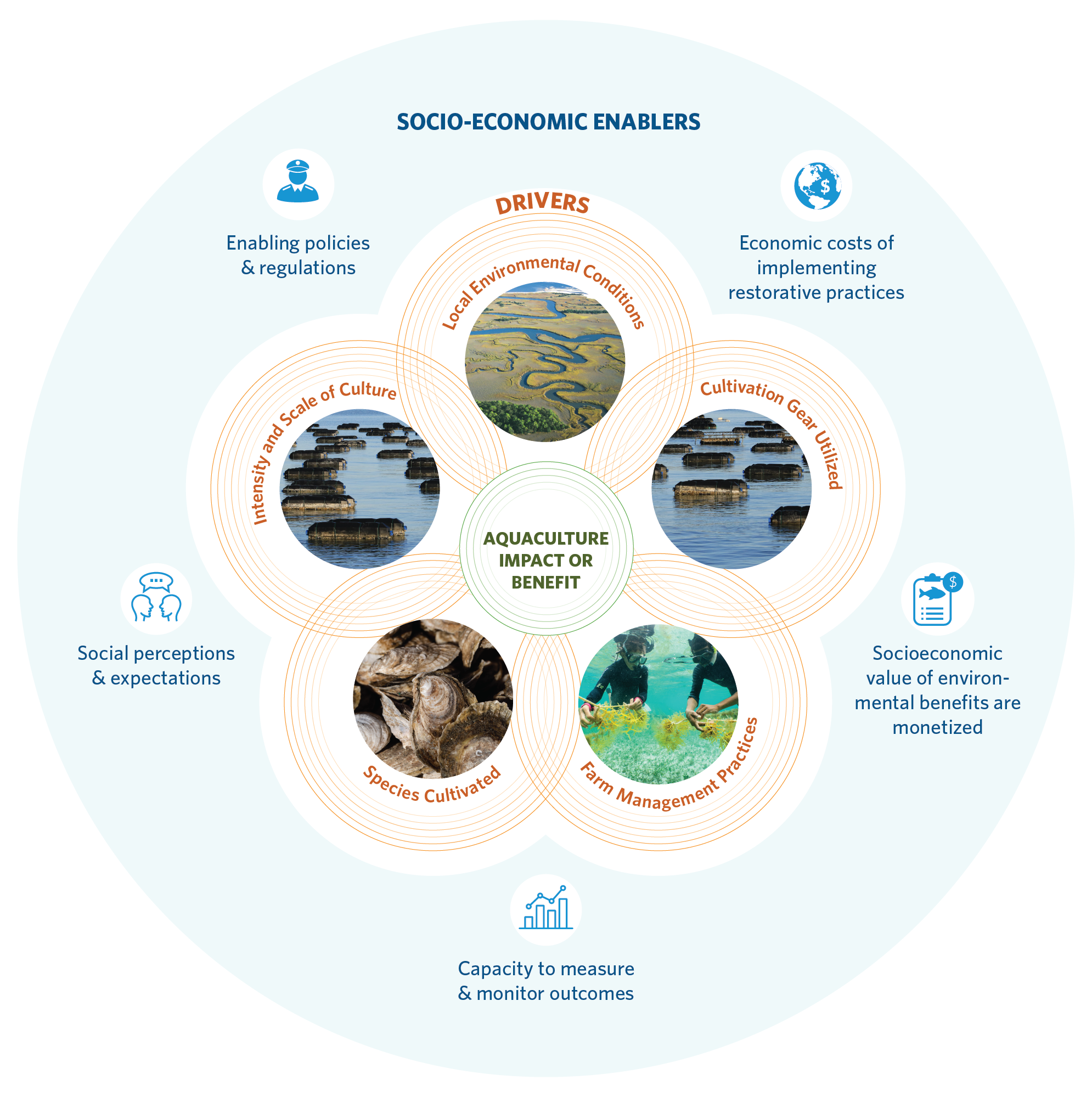
Local Benefits, Global Scale
Restorative aquaculture may be one of the best opportunities to simultaneously restore ecosystems and provide nutritious food for current and future populations. Nearly all continents and most coastal countries have the potential for restorative aquaculture in marine environments, accounting for sensitivities to local environmental, socio-economic and human health factors. In freshwater environments, solutions like integrated rice-fish farming can help communities achieve greater food production, increasing livelihood for producers while also reducing environmental impacts.
Restorative aquaculture farming provides multiple ecosystem benefits including:
- Improving water quality through filtration and removing excess nutrients;
- Creating structured habitats for fish and invertebrates, which provides refuge, forage and stress reduction in the changing seas; and
- Sequestering carbon via seaweed production and products, expanding the benefits seen in wild kelp forests.
Climate Smart Seafood
A study published by TNC in partnership with the University of Adelaide describes how marine aquaculture could significantly reduce its climate impact, with exciting potential to move the industry to a net zero or even net positive impact on greenhouse gas emissions. Seaweed and bivalve species, in particular, are already a very low emissions food source. But actionable approaches exist in all sectors to reduce emissions and support natural carbon sinks and greater carbon sequestration. For example, on-farm production can be emissions-intensive and greater investment into climate-friendly infrastructure and practices could help the growing industry achieve net zero production. Also, practices such as growing seaweed alongside shellfish could be a way to offset residual emissions created by shellfish farming and lead to a net reduction in carbon emissions.

Read the New Study
In partnership with University of Adelaide, the study Climate-Friendly Seafood: The Potential for Emissions Reduction and Carbon Capture in Marine Aquaculture describes the actions marine farmers can take to be influential in reducing impacts of climate change.
Read on BioScience ›
In most countries, there is significant potential for a restorative aquaculture industry to be expanded, creating valuable opportunities to improve ocean health while generating economic returns. Nearly 50 million square kilometers of ocean have been found to be environmentally suitable to farm with restorative aquaculture techniques—that’s roughly five times the size of China. And that’s just the new opportunity—we could see even more benefits to ocean health if existing aquaculture operations are reformed to implement restorative practices.
Previous spatial analysis identified the highest opportunity regions for shellfish cultivation in Oceania, North America and portions of Asia, with the highest opportunities for seaweed cultivation in Europe, Asia, Oceania, and the Americas. Further analysis of climate vulnerability and the opportunity to implement a climate-smart approach identified Northern America and Europe as having comparatively lower regional vulnerability and higher opportunity for impact on climate mitigation. Australia, Canada, France, Italy, Japan, Republic of Korea, New Zealand, Norway and the United States of America were identified as well-positioned to advance strategies linked to mariculture.
Quote
Restorative aquaculture has the potential to go a step beyond impact reduction and actually improve marine environments.
Critically, the conservation benefits of the aquaculture industry can also be more cost-effective than many other approaches. Restoring a single acre of oyster reef may cost hundreds of thousands of dollars when considering the full costs of the project. But deploying aquaculture farms which adhere to restorative practices can provide some of the same benefits to the environment without requiring significant public or philanthropic investment—it’s an environmental solution that could generate revenue.
In fact, the nutrient removal benefits of bivalve and seaweed farming was recently estimated to provide $84-$505 USD per tonne of nitrogen reduction. Additionally, the habitat provided by farming was estimated to support 300–1,100 kilograms of additional fish per hectare per year (in comparison to reference habitats), potentially worth an additional $1,000-$3,000 USD per hectare per year to commercial or recreational fishers. If sustainable bivalve and seaweed farming operations scale to three times their current size by 2050, these nutrient and habitat values could provide value worth $17–$56 billion USD annually.
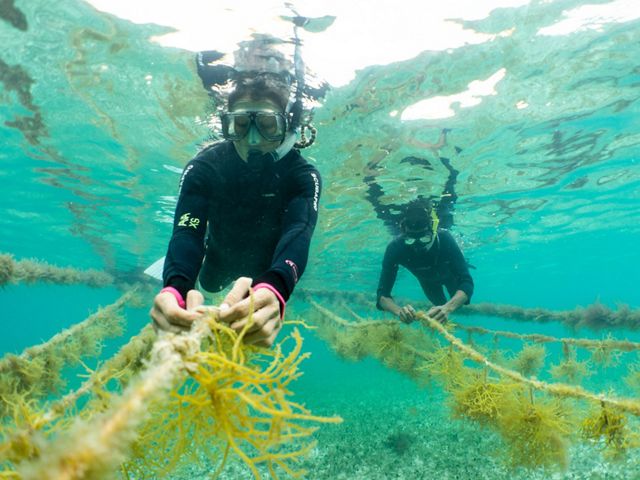
Our global insights, straight to your inbox
Get our latest research, insights and solutions to today’s sustainability challenges.
Sign UpGuiding Industry Growth, for the Benefit of All
Communities around the world are currently realizing the multiple benefits of restorative aquaculture. In Qindao Lake, China, silver and bighead carp are being farmed in a manner that supports the lake’s water quality. In Belize, fishers in Placencia are developing new seaweed farms as an alternative livelihood approach. The farms are showing benefits to flora and fauna of the surrounding environment, including providing habitat for commercially important conch and lobster species that are now depleted in the wild. In the United States, oyster farming in the Chesapeake Bay has been formally recognized as a water quality improvement strategy to help meet nitrogen management goals of the nation’s largest estuary.
But the current examples are dwarfed by the scale of the opportunity. At a large enough scale, restorative aquaculture could create significant economic opportunities for coastal communities around the world, expanding on the $264 billion in revenue and employment opportunities for 20 million people that the aquaculture sector is already providing.
This integrated body of information—science, mapping, principles, and on-the-ground case studies—can help governments, international development organizations and investors as they prioritize policy initiatives, spending and business planning for optimal economic, social and environmental returns. The involvement of each of these stakeholders will be critical to deploying restorative aquaculture at a meaningful scale.
With a global population set to reach 10 billion by 2050, we must find ways to produce more food and create more jobs with less environmental impact. Restorative aquaculture is one of the best ways we have to realize a future where people and nature thrive together.
Resources
-
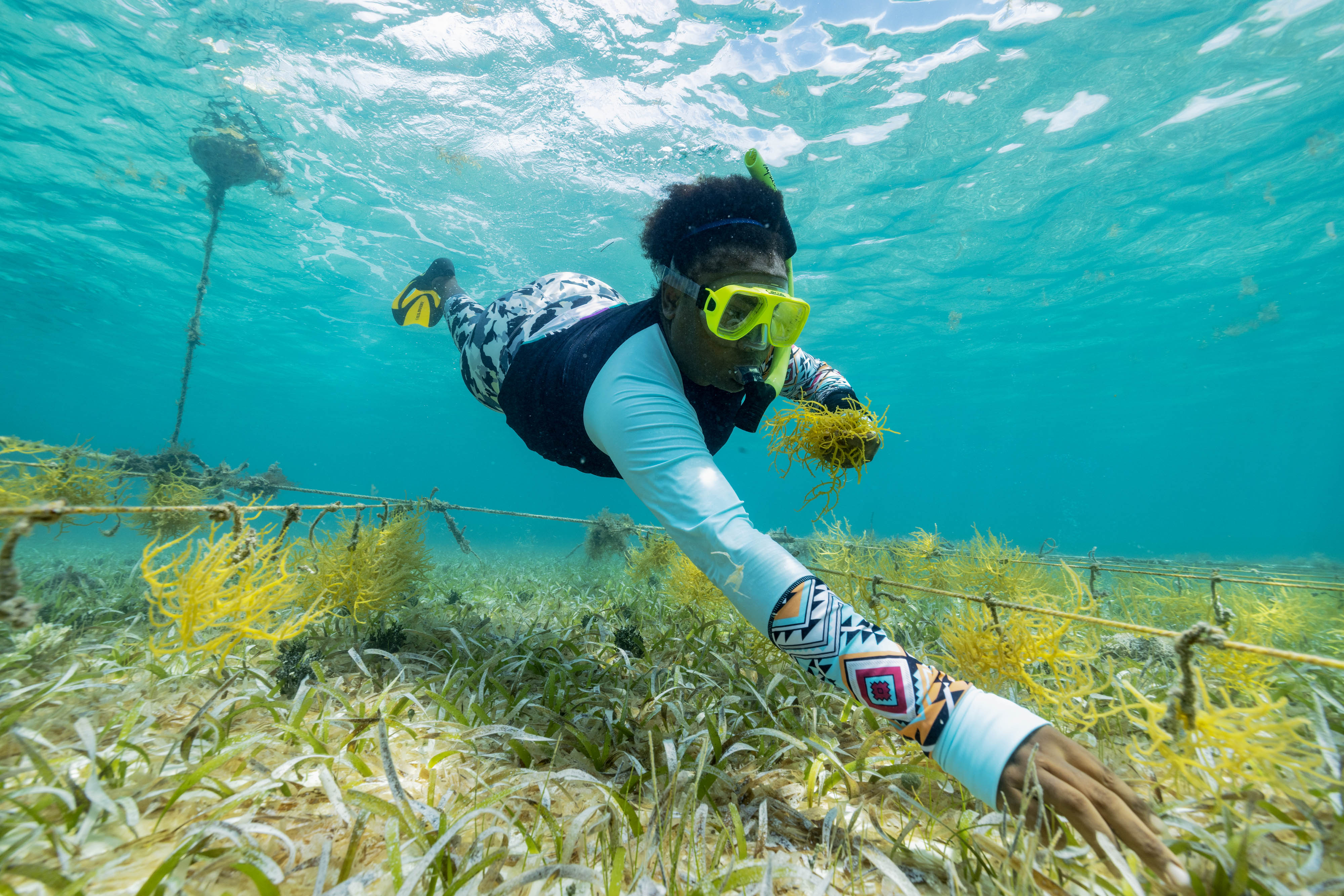
-
Global Principles of Restorative Aquaculture
PDF
Restorative aquaculture can help restore ocean health, as well as support economic development and food production.
Download -
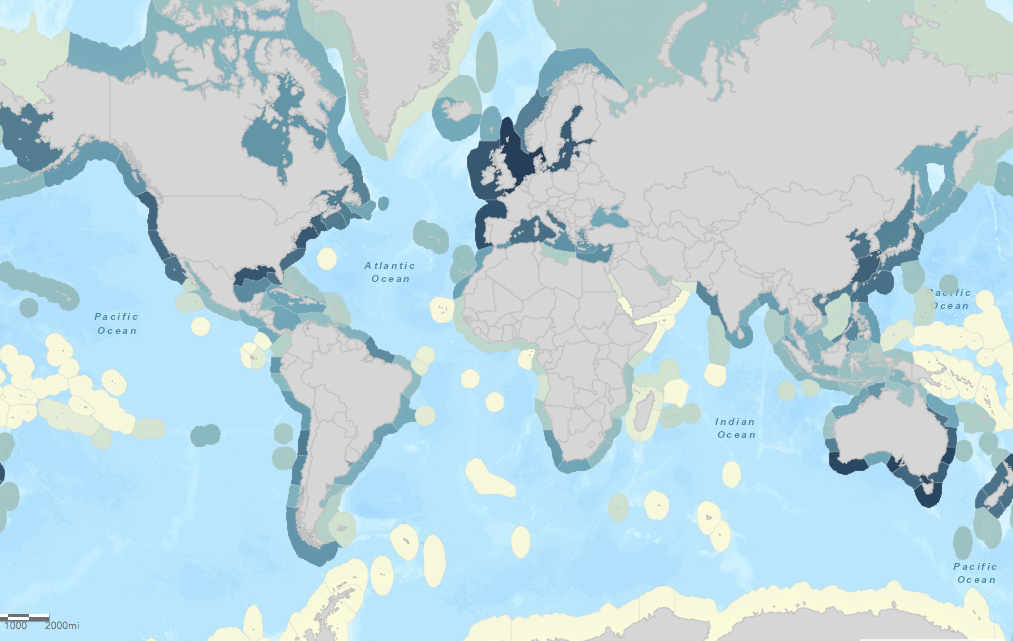
Global Restorative Aquaculture: Spatial Analysis
Interactive Map
An interactive map showing where marine aquaculture can benefit nature and people.
Download
Restorative Aquaculture Reports & Resources
- Global Habitat Value of Restorative Aquaculture: A growing opportunity to create a food system with environmental benefits
- Aquaculture Contributions to Ecosystem Services: Exploring the Potential for Marine Aquaculture to Contribute to Ecosystem Services
- Non-Fed Aquaculture Ecosystem Benefits: Sustainable growth of non-fed aquaculture can generate valuable ecosystem benefits
- Climate-Friendly Seafood: The Potential for Emissions Reduction and Carbon Capture in Marine Aquaculture
- Sustainable Shrimp Aquaculture: Reducing carbon emissions in the shrimp aquaculture supply chain (.pdf)
- A global and regional view of the opportunity for climate-smart mariculture
Global Insights
Check out our latest thinking and real-world solutions to some of the most complex challenges facing people and the planet today.
